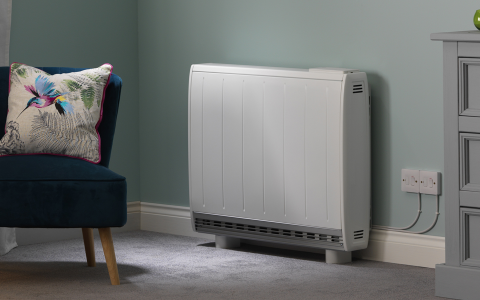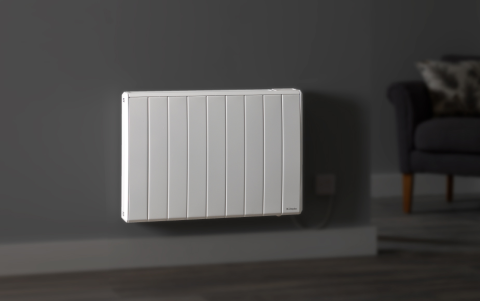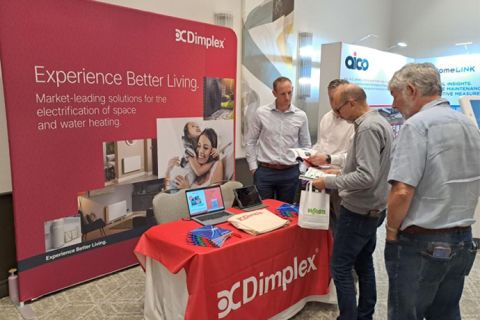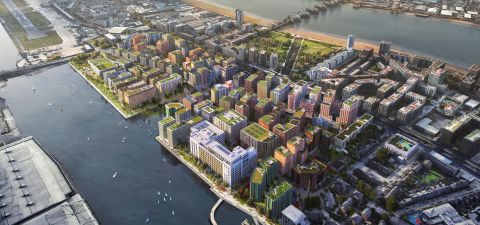
Zeroth and E.ON’s ectogrid™ deliver sustainable energy solution for Plot 6 of Silvertown development
Plot 6, developed by Lendlease with Maccreanor Lavington as architect and Bryden Wood as M&E consultant, delivered 106 affordable homes in the last quarter of 2025. It marks the starting point of a 6,500-home development that will rank among the UK’s largest affordable housing projects.
The Zeroth Energy System has been specified on plots where it will deliver hot water, space heating and comfort cooling. A series of case studies as the project progresses will be available on our dedicated Silvertown project page.
Silvertown lies at the heart of the 60-acre Royal Docks site that has lain undeveloped for over 40 years. It is located in the London borough of Newham. Plans for its regeneration include the building of 6,500 new homes, of which 50% will be affordable housing. The total development, which is planned over the next 10-15 years, is estimated to be at a value of £5BN.
Aside from housing and infrastructure, the Silvertown development will create 10,000 new jobs, plus 1,700 full-time London Living Wage jobs during construction. In addition to residential developments, Silvertown will have 500,000 sq. ft of flexible retail, restaurants, sports and leisure. This will include a kayak club and open water swimming areas.
The site is home to two iconic buildings that will be retrofitted and repurposed as part of the project. The first of these buildings is a Grade II listed grain silo built in the 1920s called ‘Silo D’. The other is the 10-story high Millennium Mills building. The latter has appeared in films such as The Batman and Paddington.
Zeroth and E.ON ectogrid™ support Silvertown's pledge to achieve Absolute Zero Carbon status by 2040
Newham Council has pledged to become carbon neutral by 2030. Silvertown's plans are aligned with the target, and it will be a fossil fuel-free development during its construction and operation. Beyond this, Silvertown will be Net Zero Carbon by 2025 and Absolute Zero Carbon by 2040, supporting the council’s long-term carbon reduction aspirations. The energy for the 6500 homes will therefore need to come from sustainable sources.
The importance of tackling climate change in urban environments is highlighted in a report by the International Energy Agency (IEA). On a global scale, cities account for around 75% of energy consumption, 70% of the greenhouse gas emissions and are home to more than half of the Earth’s population[1]. Without the transition to clean energy, climate goals will be missed, and economic growth could be affected.
Heating homes accounts for 18% of the UK’s greenhouse gas emissions[2] and the need to decarbonise heat will only intensify if the UK is to reach its pledge of becoming net zero carbon[3] by 2050 (set out in the Paris Agreement).
H2: District and communal heat networks deployed for Silvertown development
Heat networks provide a way to improve the efficiency of heat delivery at scale to multiple locations from a single heat source. There are two types of heat networks being implemented for Plot 6.
- A 5th generation district heat network – E.ON ectogrid™ distributes energy between the buildings throughout the whole Silvertown development from an energy centre or potentially locally available ‘waste’ heat sources.
- A communal network – Dimplex’s Zeroth Energy System delivers heating, hot water and in most cases, comfort cooling, to the dwellings within a building using an ambient loop and in-apartment heat pumps.
Although the idea of combining communal networks with 5th generation district heat networks, such as the E.ON ectogrid™, is fairly recent, the idea of using district heat networks is not new to the UK.
It is estimated that around 1 in 25 households[4] are part of a district heat network. Most existing district heat networks are powered by natural gas or combined heat and power. However, there is a real-time switch to waste heat and low-carbon sources in district heat networks under construction or in planning[5] as well as a switch to lower temperature networks. This shows that ambient loop technology and 5th generation district heat networks are already being factored into the UK’s urban development plans.
The race is on to find sustainable solutions to provide low-carbon energy and eventually zero-carbon energy in our homes at scale through the use of heat networks. At Silvertown, Dimplex is working in partnership with the energy supplier E.ON to help develop a unique sustainable urban energy solution.
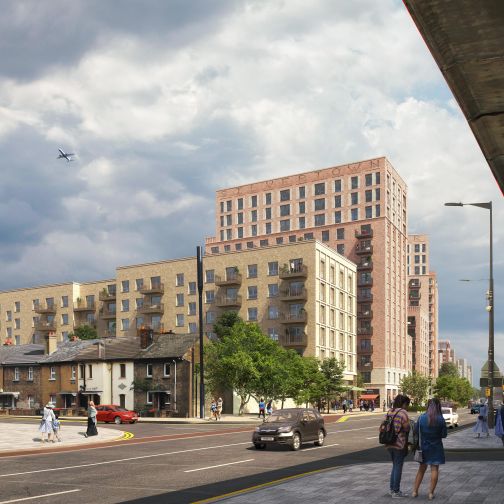
Combining low temperature heat networks and ambient loops at Silvertown
The combination of two technologies is critical to this solution. The benefits that the Zeroth Energy System and E.ON’s ectogrid™ bring in terms of energy efficiency and carbon reduction are a potential blueprint to meeting the future sustainable energy requirements in urban environments. Zeroth balances waste heat within a building by returning any heat to the ambient loop, thus reducing the load on the plant room. The E.ON ectogrid™ on the other hand, balances the energy demand within the development network and utilises local low-carbon energy sources as well as waste energy before ‘adding’ energy from other sources.
“ectogrid™ is a pioneering system for sharing energy that will be instrumental in helping to make energy more affordable and sustainable,” explained Tony Poole, Head of Business Development at E.ON. “ectogrid™ is a circular energy system that adjusts its temperature to the surrounding environment, only adding new energy – heating in the winter, cooling in the summer – when all available energy within the network has been fully shared.”
The result is confidence in Silvertown being an absolute zero carbon development by 2035, 15 years ahead of the 2050 target the UK is legally obliged to.
The specification of Zeroth Energy System for the delivery of low-carbon heating and hot water for Plot 6 of Silvertown.
We already covered that the Zeroth Energy System uses ambient loop technology to deliver highly efficient, low-carbon space heating and hot water for Plot 6 of the Silvertown project. Let’s look at the application in plot 6 in more detail.
The ambient water loop within the building is maintained at 25°C by a temporary energy centre that will serve the first phases of the project before being replaced by the main energy centre for the development. The energy centre is equipped with heat pumps and chillers that provide an efficient source of heating and cooling for the building-to-building network. These additional resources from the energy centre are only called upon if the energy sharing between buildings does not fulfil the energy demand. In the future, the additional source can be served from waste heat or cooling from industrial sites nearby, datacentres, or possibly The Underground.
On the building level, the ambient loop is connected to a network of Zeroth in-apartment heat pumps that provide heating and hot water for individual dwellings in plot 6. This is a two-pipe system for both heating/hot water and cooling/heating/hot water applications. The in-apartment water-to-water heat pumps draw energy from the ambient loop and uplift it, before storing it in an integrated hot water cylinder. The high COP of Zeroth and the low distribution losses of the ambient loop mean deliver a very high overall efficiency.
What is the in-apartment set up of the Zeroth Energy System for Plot 6
The Zeroth unit is installed within a standard utility cupboard and quietly goes about its work, operating as low as 23dB. The COP of the Zeroth heat pump ranges between 3.5-9.3, depending on the model and operating parameters.
The Zeroth Energy System is connected to underfloor heating as the plot only requires space heating. Fan coil units or cooling coils within MVHR systems can be specified if comfort cooling is required.
The Zeroth Energy System has an in-built control unit.
Plot 6 of Silvertown is the only development that will feature space heating and hot water only. Subsequent plots will see the installation of Zeroth models that provide comfort cooling for individual apartments by using emitters such as fan coil units.
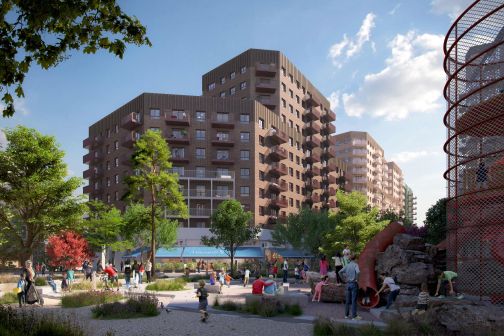
How can comfort cooling be used to increase energy efficiency?
Zeroth cooling models will bring additional efficiencies to the ambient loop and the building-to-building network and a host of other benefits.
The comfort cooling provided by Zeroth helps to reduce overheating, increasing thermal comfort for residents and helping developers to comply with Part O (Overheating) of the building regulations. Traditional air conditioning units extract heat and vent it to the outside of the building. As well as wasting heat, this process can also add to the urban heat island effect, creating a hot microclimate in densely populated areas.
This is not the case when Zeroth supplies comfort cooling, as the energy used by the Zeroth Energy System to provide comfort cooling is not wasted. The heat generated by Zeroth when in cooling mode can be returned to the ambient loops, meaning it is ultimately used elsewhere in the building for hot water or space heating. This helps reduce the instances where E.ON ectogrid™ needs to supply heat to the ambient loop in the building.
Mark Burton, Head of Renewables from Dimplex, welcomed the use of ambient loop technology on the project: “We are excited that The Zeroth Energy System is the chosen heating solution for Plot 6 on the Silvertown development. Zeroth produces no carbon emissions at source, helping to deliver on the borough’s carbon reduction targets, while also increasing energy efficiency and eliminating air pollution from heating, which means it will also help to deliver on sustainability goals for cleaner urban air.”
How does the E.ON ectogrid™ heat network ensure that low-carbon energy is supplied efficiently to Silvertown?
The E.ON ectogrid™ is a 5th Generation Heat Network that runs a thermal network of pipes between buildings. This network consists of one cold pipe and one warm pipe, typically around 20-30°C. These pipes make the network capable of sharing low temperature and excess thermal energy. The low running temperature enables the grid to incorporate local waste energy into the network from industrial sources.
Waste heat could be used to supply 14% of the hot water and heating demand in UK homes[6]. In the case of Silvertown, waste heat that would otherwise be discharged will instead be used by the E.ON ectogrid™ to help power the entire development.
In the government’s 2024 ‘UK Heat Networks Market Overview[7]’, its language echoes the attributes of 5th Generation Heat Networks such as the E.ON ectogrid™ where it states: “Inherently flexible – heat networks can take advantage of a wide array of different heat sources – including the recovery of low-carbon heat from resources that would otherwise be wasted - such as industry, energy-from-waste plants, or naturally occurring sources such as geothermal or rivers.”
As well as capturing waste heat from the locality, the E.ON ectogrid™ can also extract heat from the surrounding ground, air and waterways using renewable heat pump technology. The use of waste heat and local natural energy sources helps to keep the carbon emissions of the energy used by Silvertown as low as possible.
The energy from the heat network is boosted as required for each connected building by decentralised heat pumps. They can cool buildings down by lowering the temperature from the cold pipe of the grid. Conversely, by turning up the temperature of the warm pipe in the network, they can heat a building. The clever use of the E.ON ectocloud™ software gives the network the ability to monitor energy use and optimise it to unlock the full potential of the grid.
In a similar way to the Dimplex ambient loop technology, this means that energy can be shared, but this time between buildings rather than apartments. Where a building requires cooling, the energy removed can be used elsewhere within the E.ON ectogrid™ network or kept within the thermal store that forms part of the system to help balance out demand. Only when there is no more spare energy available will the network call for replenishment.
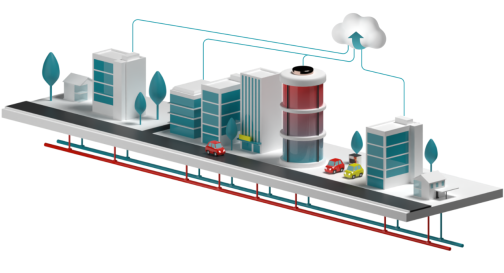
How does the E.ON ectocloud™ control system optimise the efficiency of the E.ON ectogrid™
The E.ON ectocloud™ is the digital platform that handles and controls the E.ON ectogrid™ energy system. With the help of cloud computing, AI and IoT technology, E.ON ectocloud™ boosts the performance and efficiency of the entire E.ON ectogrid™.
The E.ON ectocloud™ integrates with the E.ON ectogrid™ and optimises components. It changes temperature in the grid to improve the COP values of heat pumps and cooling machines, reducing peaks in energy consumption, maximising the degree of using self-generated renewable electricity and prioritising between energy sources.
The software uses data including weather, energy prices, local energy production and flexibility to make a prognosis for energy use in advance. The system can also adjust in real time to optimise the efficiency of the E.ON ectogrid™
Why is the marriage of the Dimplex Energy System and the E.ON ectogrid™ considered a blueprint for the future of low-carbon energy efficient urban living?
Both the Zeroth Energy System’s communal network and the E.ON ectogrid™ district heat network are highly efficient, low-carbon systems. Zeroth works at the building level using efficient heat pump technology with an overall system efficiency of around 300% and offers a space cooling efficiency ratio of up to 5:1. The E.ON ectogrid™ system effectively harnesses all available local thermal energy and waste heat sources to provide low-carbon energy between the buildings in its network. Both systems only draw in additional energy when necessary, and Zeroth can feed excess energy back into the E.ON ectogrid™.
The low temperature nature of energy transfer in both systems reduces heat loss. At a building level, keeping ambient loop pipes at 25°C helps to reduce thermal gain in corridors. Thermal gain from warm pipes can cause major overheating issues in high temperature distribution systems.
Between buildings, the low temperature (25-30°C) underground pipes of the E.ON ectogrid™ network lose minimal heat to the ground and do not require insulation. This saves time and capital cost and makes it easier to expand the grid when new buildings are due for connection throughout the project.
The Zeroth Energy System is flexible when it comes to energy sources for its ambient loop and can be easily connected to the E.ON ectogrid™ network through plate heat exchangers. These take up less space than using fossil fuel systems, allowing valuable space to be freed up for developers to help maximise the value of the assets.
Both the Zeroth Energy System and the E.ON ectogrid™ energy network run at low temperatures using low-carbon and renewable technologies. They minimise waste by sharing heat and energy between individual apartments and whole buildings to maximise system efficiency. These synergies make the technologies a complementary pairing. This perfect combination gave Newham Council and the GLA a compliant, low-carbon system to deliver energy at scale to the residents of the Silvertown regeneration project.
Mark Burton of Dimplex discussed the close working relationship with E.ON on the project: “Whilst the scale of our two systems is very different, the principles of gathering data to enable energy sharing and system optimisation are central to both. We are working closely with E.ON to get the best integration and information exchange between our systems to maximise their joint energy saving and carbon reducing potential in urban regeneration.”
Where can I find out more about the low-carbon and energy efficiency benefits of the Zeroth Energy System?
Dimplex has extensive experience in developing low-carbon heating and cooling systems for local authorities across the UK in the form of the Zeroth Energy System. It is a very adaptable ambient loop solution that can work in combination with a variety of heat sources, including 5th Generation heat networks such as E.ON ectogrid™, and is already delivering outstanding results for our customers.
Mark Burton of Dimplex describes the commitment of the company to the project: “On the Silvertown project we have carried out extensive system testing and worked closely with technical teams on the Plot 6 phase of the project. Both the Zeroth Energy System and the E.ON ectogrid™ are systems that maximise efficiency and minimise waste. It is the perfect combination to bring compliance to the developer, sustainable energy delivery for the environment and cost-effective heating and hot water to the residents of Silvertown. Zeroth is the ideal solution for zero carbon ready projects as it connects to a variety of heat sources, including district heat networks. We are proud to be part of this exciting project that we believe can shape a sustainable future for low-carbon, energy-efficient delivery of building services in urban developments.”
The Zeroth Energy System has been specified across multiple plots throughout Silvertown, and as these are installed and connected, we will create more exciting case studies and content. Our Silvertown hub is where you will be able to find out more about these developments, as well as find content on the project as a whole.
If you would like more information on how the Zeroth Energy System could help deliver low-carbon energy efficient heating and comfort cooling to your next urban project, contact Dimplex design team or visit our dedicated Silvertown development page.
[1] https://www.iea.org/reports/empowering-urban-energy-transitions/executive-summary#
[2] https://www.nao.org.uk/wp-content/uploads/2024/03/Decarbonising-home-heating-HC-581-SUMMARY.pdf
[3] https://commonslibrary.parliament.uk/research-briefings/cbp-9888/
[4] https://www.smf.co.uk/publications/a-fairer-deal-for-heat-networks/
[5] https://www.heattrust.org/about-heat-networks
[6] https://www.cibsejournal.com/technical/wasted-opportunity-using-uk-waste-heat-in-district-heating/
[7] https://assets.publishing.service.gov.uk/media/66a23740a3c2a28abb50d711/uk-heat-networks-market-overview.pdf



